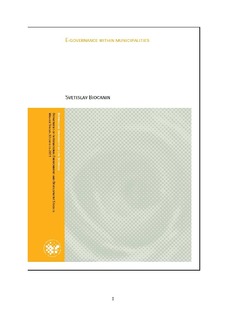| dc.description.abstract | Information and communication technologies facilitate easier access and information
flow using the internet and therefore constitute an enhanced traditional form of
communication. Throughout the world governments have adopted the new method of
communicating with citizens by internet thus making possible simpler and faster access to
information of public significance by introducing e-governance. An increasing number of
governments are using e-governance as a new form of information exchange and accessibility
with the goal of offering improved electronic services, increased transparency, and cost
reduction. The introduction of e-governance implies fundamental changes within the
administrative system and on the level of citizen – government relations. Besides, the
introduction of a new system of communication between the government and citizens raises
political, social and technological issues which greatly impact the quality and speed with
which services can be implemented. Developing countries still must face numerous problems
when implementing e-governance, although they may be applying principles which had
proved successful in developed countries. Serbia also must deal with a variety of problems
and challenges when introducing new e-services. This study is an analysis of the current state
of affairs with regard to e-governance in two Serbian municipalities. The study is based on
the experiences, problems and challenges faced by citizens in the course of using available eservices.
The research performed by means of surveys and informal interviews, with citizens
of both municipalities, has shown that the level of sophistication of the services is low because
local administrations for the most part allow only access to information and downloading of
application forms. The availability of these services suggests that communication between
citizens and the administration is mainly one-way. The example of these two municipalities
has shown that available services are insufficiently interactive, which is one of the
preconditions for the transition to full two-way communication. In addition, there is a clear
need, supported by citizen sentiment, to develop and implement a more efficient system of
two-way communication with local government. | en_US |
